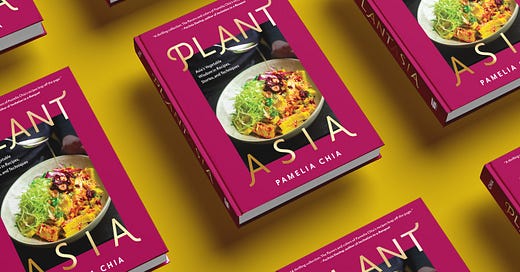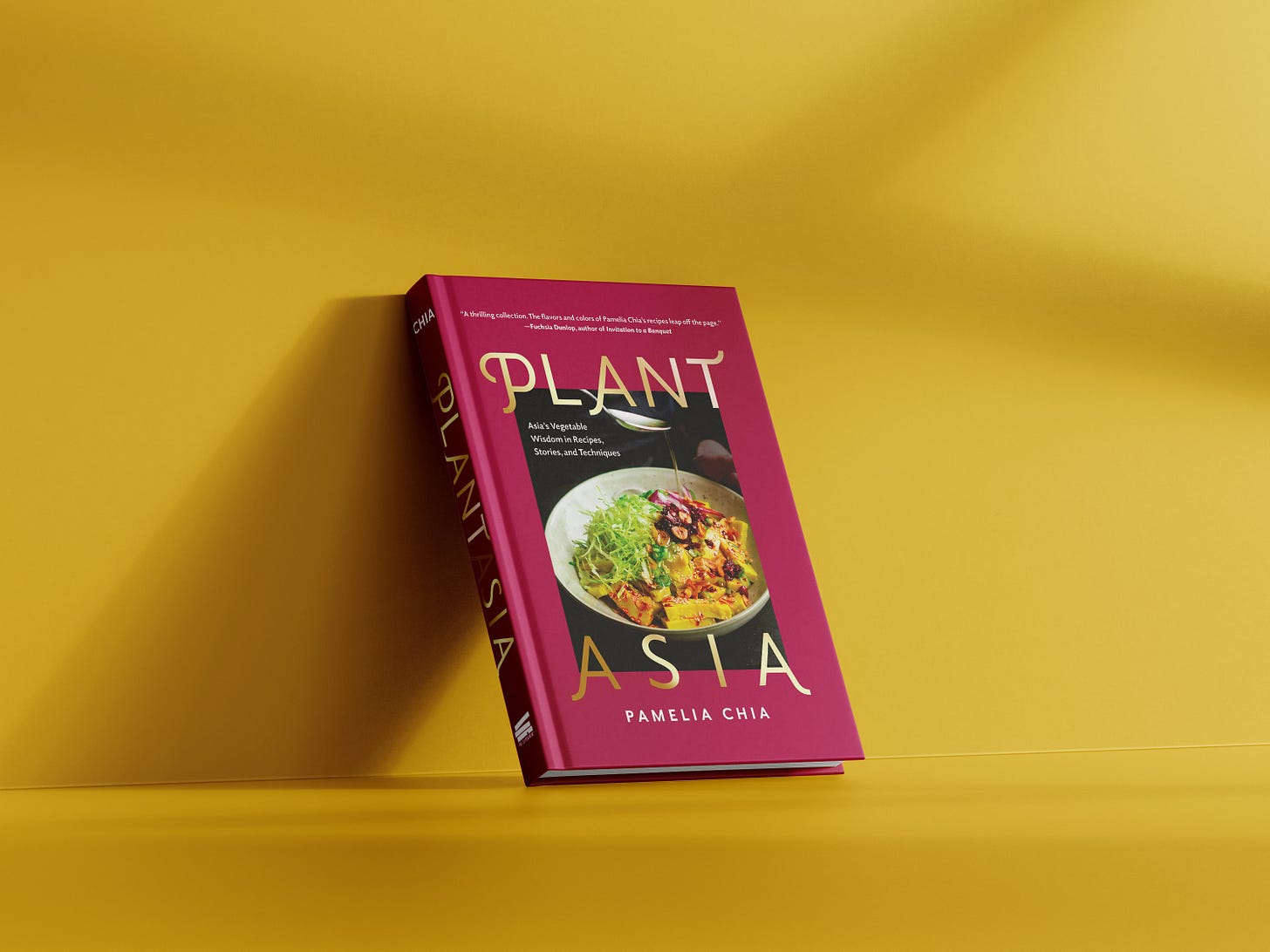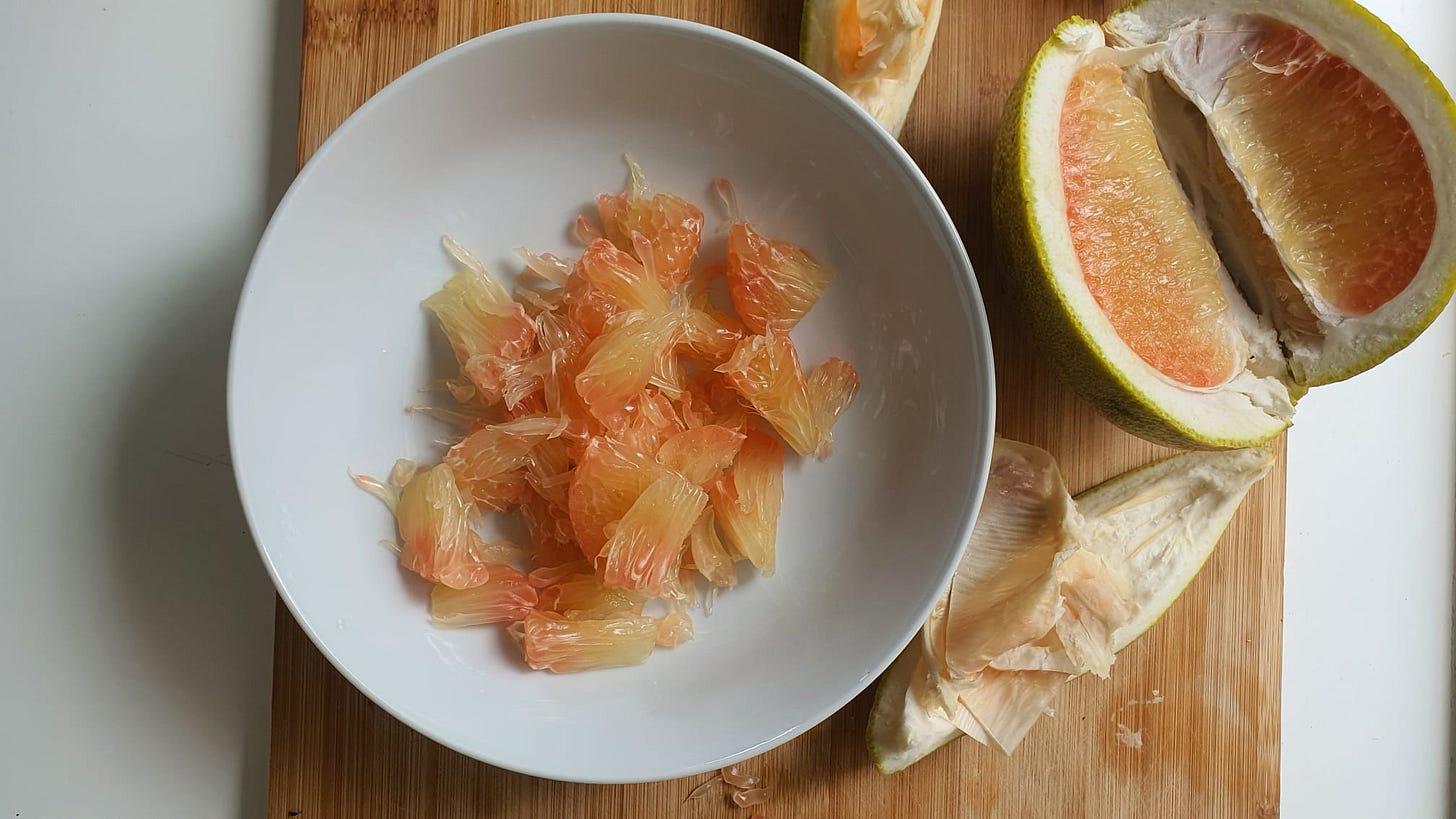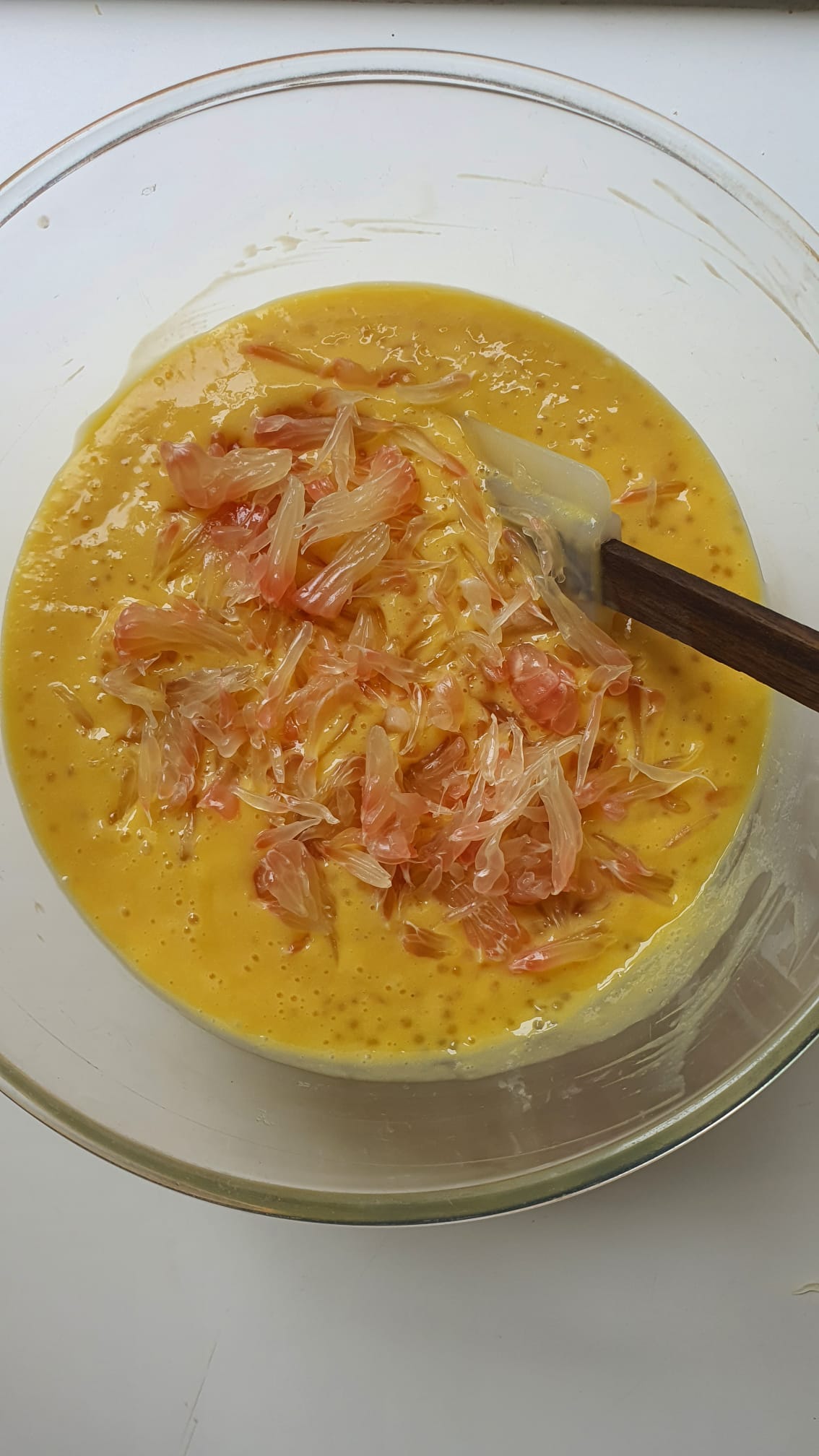I’m thrilled to share some big news with you — a new edition of my second cookbook PlantAsia, will be published in fall 2025!
In 2019, I was living in Australia and, for the first time, recognised the urgency of climate change. I decided to cut down on my meat consumption, which led to me writing a vegetarian cookbook from an Asian perspective.
In 2023, I launched PlantAsia, and since then I've been personally distributing it to bookstores and readers around the world. Still, I wanted a better solution to get my book to overseas readers because of exorbitant shipping prices.
In 2024, an unexpected email from The Experiment, a New York-based publisher, landed in my inbox, expressing interest in bringing PlantAsia to a global audience.
And now, I’m excited to announce that a new edition of PlantAsia will be published on October 28 2025, and can be preordered everywhere books are sold!
PlantAsia is my tribute to Asia’s diverse and deep well of vegetable wisdom, packed with 88 recipes that showcase flavour combinations and techniques from more than fifteen countries. It's more than just a recipe book—woven throughout are stories and conversations with two dozen acclaimed chefs, food writers, and cookbook authors that will transform the way you think about and cook with vegetables.
This book is for YOU if you are a vegetarian or vegan seeking to expand your repertoire, an adventurous foodie, or someone looking to improve your relationship with veggies.
Whether you'll enjoy this book as a good bedside read, or as a companion in the kitchen, I hope this book will leave you excited and inspired at all that plants have to offer.
While the launch is not until October 28 2025, the book is now available for pre-order. Your support in pre-ordering plays the BIGGEST role in the success of this cookbook and opens up opportunities for exciting in-person events, like book tours and cooking classes! 🥬✨️
Thank you so much for your support and I can’t wait to show you more.
UNILEVER X PLANTASIA
Speaking of PlantAsia, last week I hosted a team-bonding cooking workshop for Unilever. The company was located in Wageningen University and there was such invigorating, youthful, hopeful energy! It was extra special being there and speaking to everyone about their line of work, given that my training was in Food Science & Technology — it felt like I was taking a peek into the world of many of my former course mates and my possible alternate life, if I hadn’t chosen to cook and write about food for a living! The company has on-site chefs who assist with research and development, and I was amazed that they managed to source FRESH wood-ear mushrooms, something incredibly hard to come by here.
With the participants, we prepared an entirely vegetarian menu, featuring recipes from PlantAsia. There was tomato salad with peanuts, soy, and coriander (P.47); bánh xèo with tempeh and beansprouts (P.127); tofu nanban (P.151); hot butter mushrooms (P.149); and vegetable rolls (P.177)—all served with rice—plus a bonus kueh dadar for dessert. It made me so proud to share flavours from the book with others and I had such a lovely time! 🥰
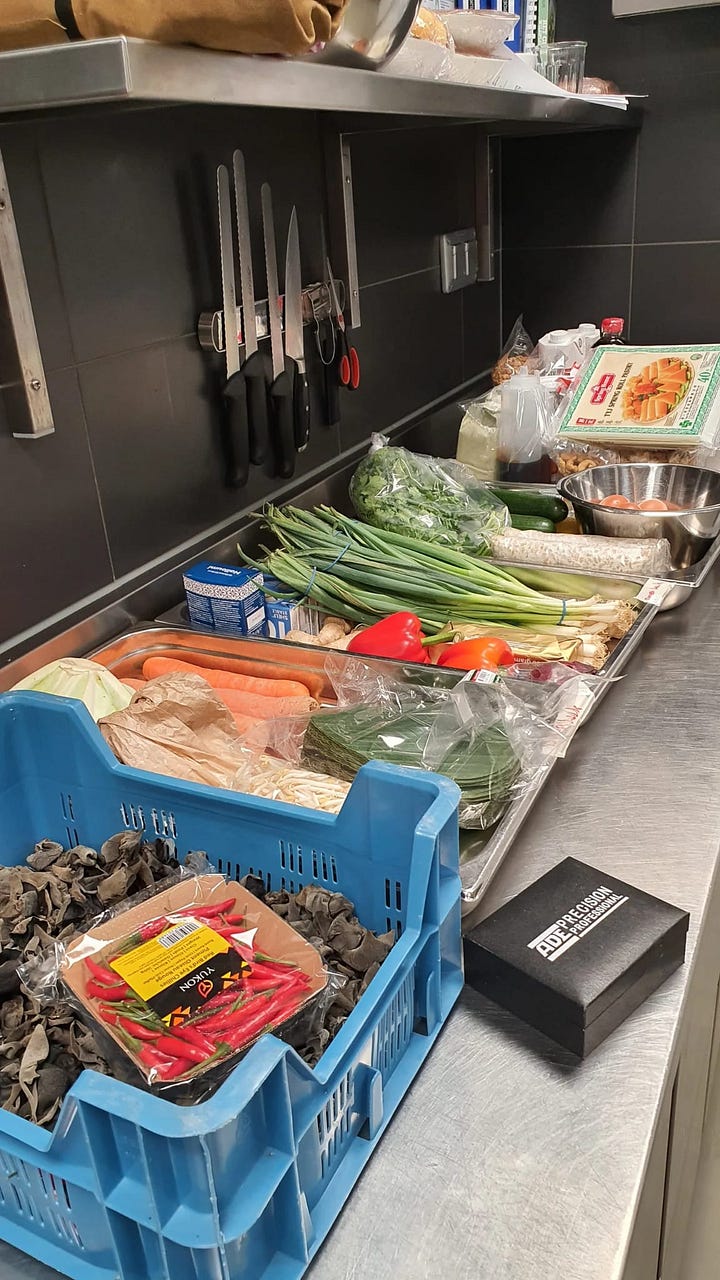
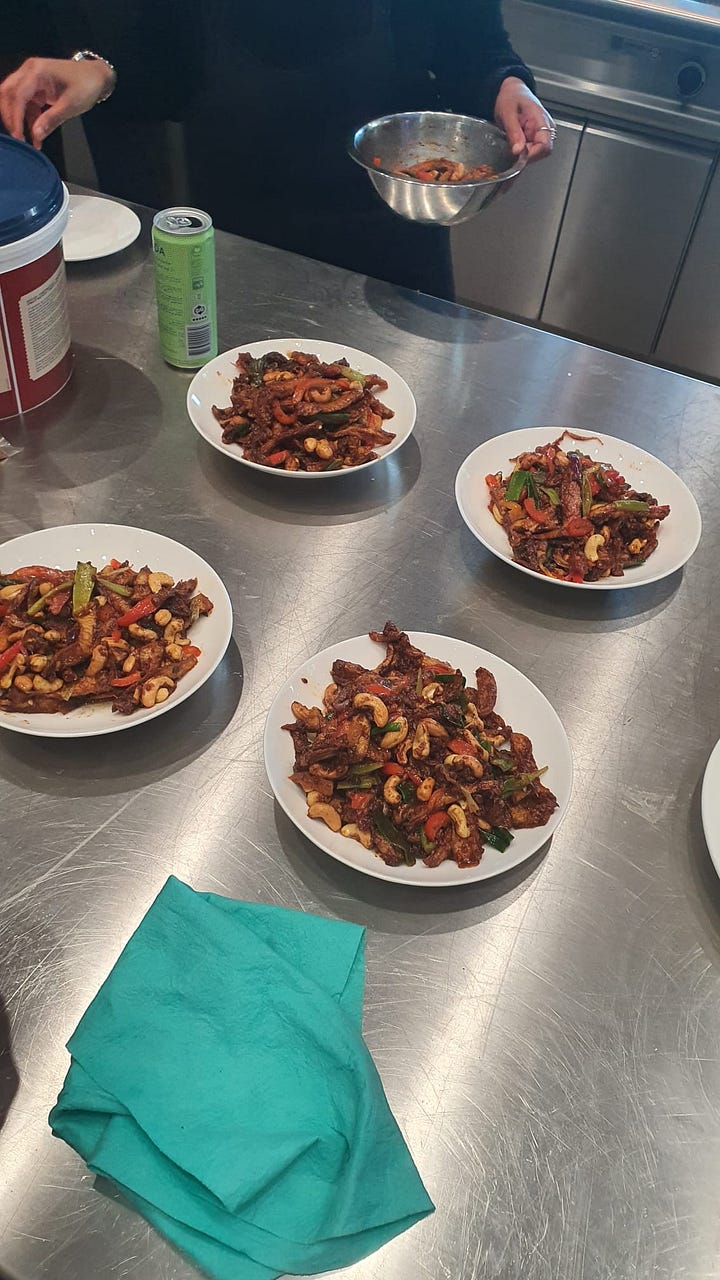
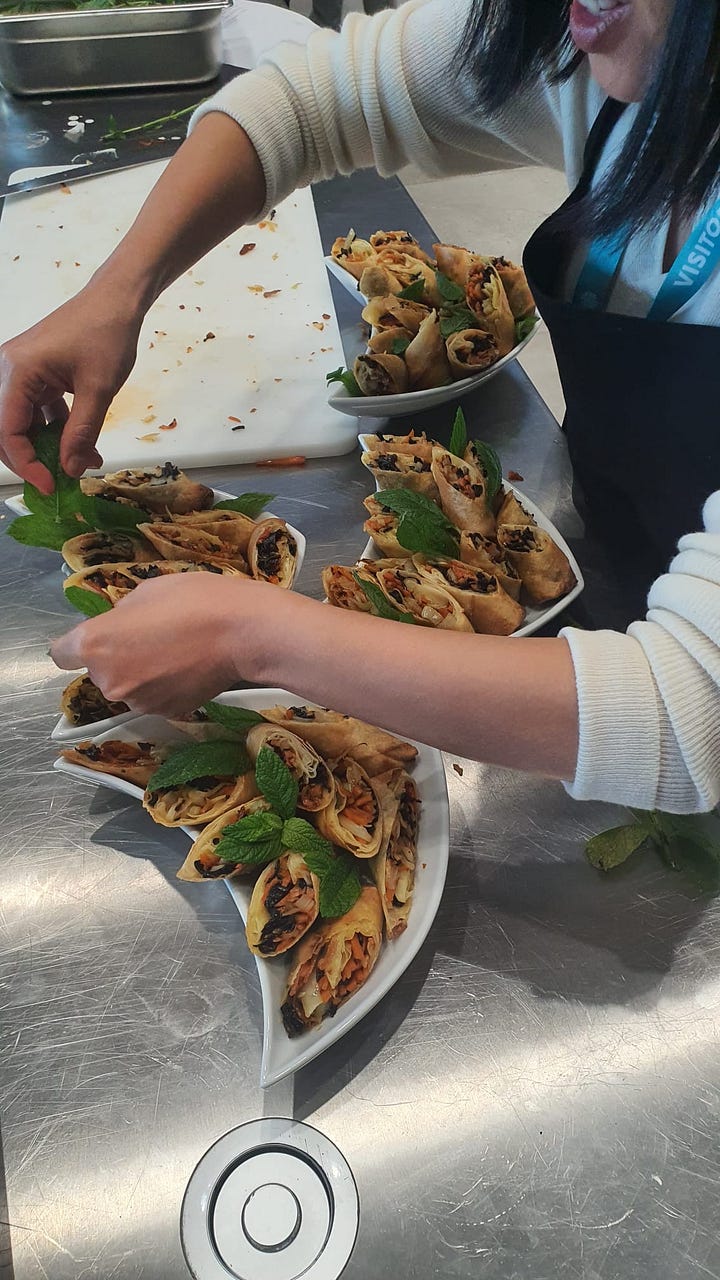
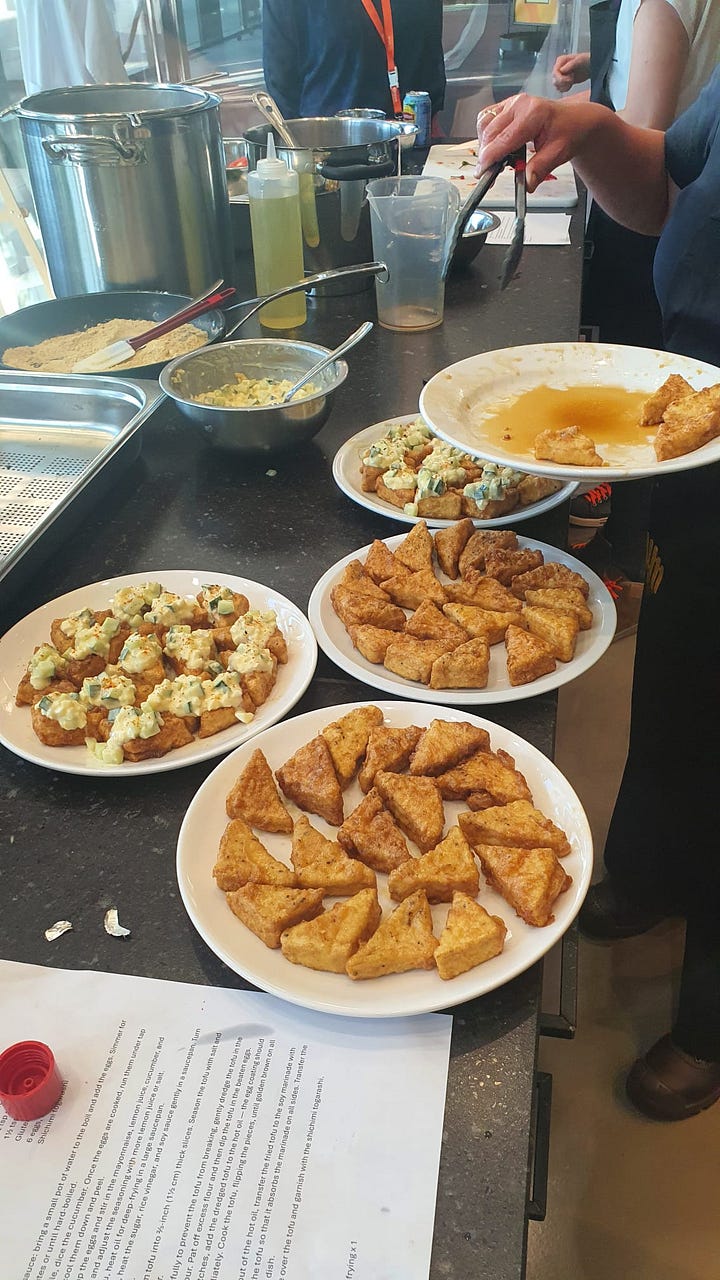
MANGO SAGO
Unexpectedly but very happily, I received four pomelos from someone who recently had too many on her hands (hi Muriel! 🙋🏻♀️). Given that mangoes are in season here in the Netherlands, I’ve been turning the fruits into mango pomelo sago, a popular dessert served at Singapore’s dessert shops. Reportedly invented in the 1980s, the dessert is made by blending mango with evaporated milk, and folding in boiled sago for texture. Finally, diced mango and pomelo pulp are scattered over the top.
In Mandarin, the dessert is known as yang zhi gan lu 杨枝甘露—“sweet nectar, willow branch.” This name points to the cooling nature of the dessert, as it evokes the image of the Goddess of Mercy holding a willow branch and a bottle of pure water to offer refreshment. While the traditional topping is pomelo pulp, diced grapefruit is a great substitute. It goes without saying that this dessert is best made during mango season, when the fruit is at its juiciest and most perfumed. While not traditional, I find that a squeeze of lime ties it all together.
Mango Sago
Makes 6 to 8 servings
½ cup (100 g) sago pearls
Peeled flesh from 2 mangoes (about 1¼ pounds/560 g), cut into ½-inch (13 mm) dice
¼ cup (60 ml) evaporated milk
2½ tablespoons (30 g) caster sugar
A squeeze of lime, optional
¾ cup (130 g) pomelo or grapefruit sacs
Bring a medium pot of water to a boil on high heat. Add the sago pearls, stir to prevent sticking, and boil for 10 minutes, or until the pearls are tender and almost completely transparent.
While the sago cooks, place 12 ounces (340 g) mango flesh in a blender. To the blender, add the evaporated milk, sugar, and ¾ cup (180 ml) water. Blend until smooth, then pour into a large bowl.
Once the sago is cooked, drain it through a large sieve. Rinse thoroughly under running water to remove excess starch and cool the pearls. Shake off any remaining water, then add the sago and squeeze of lime (if using) to the mango mixture.
Stir well and season with sugar to taste. Cover and refrigerate for at least 3 hours, or until thoroughly chilled.
To serve, ladle into serving bowls and top with the diced mango and pomelo pulp.

